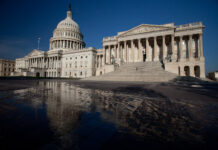Yesterday, President Biden announced he will be easing the financial burden on American citizens by approving an additional $9 billion in student loan forgiveness for 125,000 borrowers. This latest announcement brings the total debt cancellation approved by the Biden administration to a staggering $127 billion, benefitting nearly 3.6 million individuals across the nation.
The relief comes as a result of the administration’s efforts to rectify issues within existing programs, particularly the income-driven repayment plans and PSLF (Public Service Loan Forgiveness). The breakdown of the $9 billion relief package is as follows:
- Over $5 billion will be allocated to 53,000 borrowers who have dedicated a decade or more of their careers to public service, providing them with a well-deserved financial respite.
- Approximately $2.8 billion of the forgiveness will benefit 51,000 borrowers enrolled in income-driven repayment plans. These borrowers, who have diligently made payments for 20 years or more, will finally receive the relief they were entitled to but had been denied due to administrative errors.
- Another $1.2 billion will go to around 22,000 borrowers with total or permanent disabilities who have been identified and approved for discharge through a data match with the Social Security Administration.
This latest announcement is expected to have political implications as well, potentially bolstering President Biden’s chances for re-election. Mark Kantrowitz, a higher education expert, noted that Biden’s record in forgiving student loan debt stands out among previous presidents, setting him apart from other candidates aspiring to the nation’s highest office.
The development comes after the Supreme Court rejected President Biden’s earlier plan for the cancellation of up to $20,000 in student debt for millions of Americans. Undeterred by this setback, the Biden administration has continued to explore alternative avenues to provide relief to borrowers.
While the $9 billion in debt relief is a step in the right direction, advocates like Astra Taylor, co-founder of the Debt Collective, have called for even more comprehensive debt cancellation. They argue that if the Department of Education can cancel this amount, it can cancel all outstanding student debt. This move would align with the president’s commitment to assisting borrowers grappling with the complexities of repayment.
It’s worth noting that federal student loan payments resumed on October 1st after a hiatus of over three years. Concerns for the potential consequences had been raised, including delinquency and defaults, if the administration was unable to deliver on its ambitious student loan forgiveness plans.
President Biden has also introduced a 12-month “on-ramp” to repayment, designed to shield borrowers from the most severe consequences of missed payments. This timeline is, in part, influenced by the political calendar, as experts believe that data on borrower hardship will not be available until after the 2024 presidential election.










